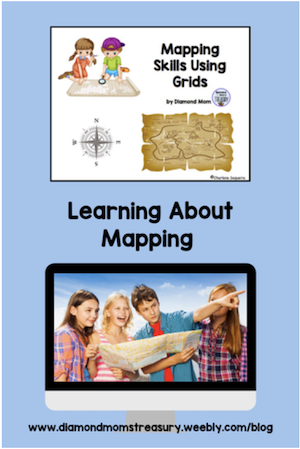|
Mapping skills are very important for navigating through the world as we know it. They provide a foundation for understanding spatial relationships, developing a sense of direction, and enhancing critical thinking abilities. Let's look a little closer at some reasons mapping skills are important for young children to learn. 1. Spatial Awareness: Mapping skills help children develop a sense of space and their position within it. They learn to understand distances, sizes, and locations of objects in relation to themselves and other landmarks. This spatial awareness is crucial for tasks such as navigating their environment, following directions, and understanding maps or diagrams. 2. Critical Thinking: Learning mapping skills involves analyzing, interpreting, and synthesizing information. Children learn to observe details, identify patterns, and make connections between different elements. They develop critical thinking skills as they solve problems, plan routes, and make decisions based on visual information. 3. Communication and Language Development: Maps are a form of visual communication. By learning to read and interpret maps, children enhance their communication and language skills. They learn to understand and use symbols, legends, and keys to convey information. They also develop vocabulary related to directions, landmarks, and spatial concepts. Not only does teaching mapping skills promote these qualities, they also prepare children for other aspects of life. It is important to provide as many opportunities to develop these skills as possible to equip them for life experiences. Here are some mapping skills that are important for young children to learn. Children should learn how to read basic maps, including understanding symbols, legends, and scales. They can also practice creating simple maps of their classroom, neighborhood, or a familiar route. They should also learn cardinal directions (north, south, east, west) and basic navigational concepts like left, right, up, and down. They can practice giving and following directions using maps or verbal instructions. Identifying landmarks around them is an important skill that helps them to recognize and locate landmarks, such as buildings, parks, or bodies of water, on maps. This helps them build a mental map of their environment and develop a sense of place. The concept of scale and proportion are also key for reading maps, where distances are represented proportionally. They can learn to estimate distances and understand that maps are a condensed representation of a larger area. The goal is for chilidren to be able to transfer their map skills to real-world scenarios. For example, they can use maps to plan a route for a field trip, find their way in a new park, or locate specific areas in their community. Mapping skills empower children to navigate their surroundings independently. By understanding maps, they can find their way, plan routes, and locate places of interest. This fosters self-reliance, confidence, and a sense of agency in exploring their environment. This booklet is a great introduction to map skills for young children. Next time I will share some different activities that can help with engaging kids by teaching these important mapping skills. Related PostsComments are closed.
|
About Me Charlene Sequeira
I am a wife, mother of 4, grandmother of 9, and a retired primary and music teacher. I love working with kids and continue to volunteer at school and teach ukulele. Categories
All
|














 RSS Feed
RSS Feed